How to Grow and Care for Sargent Crabapple
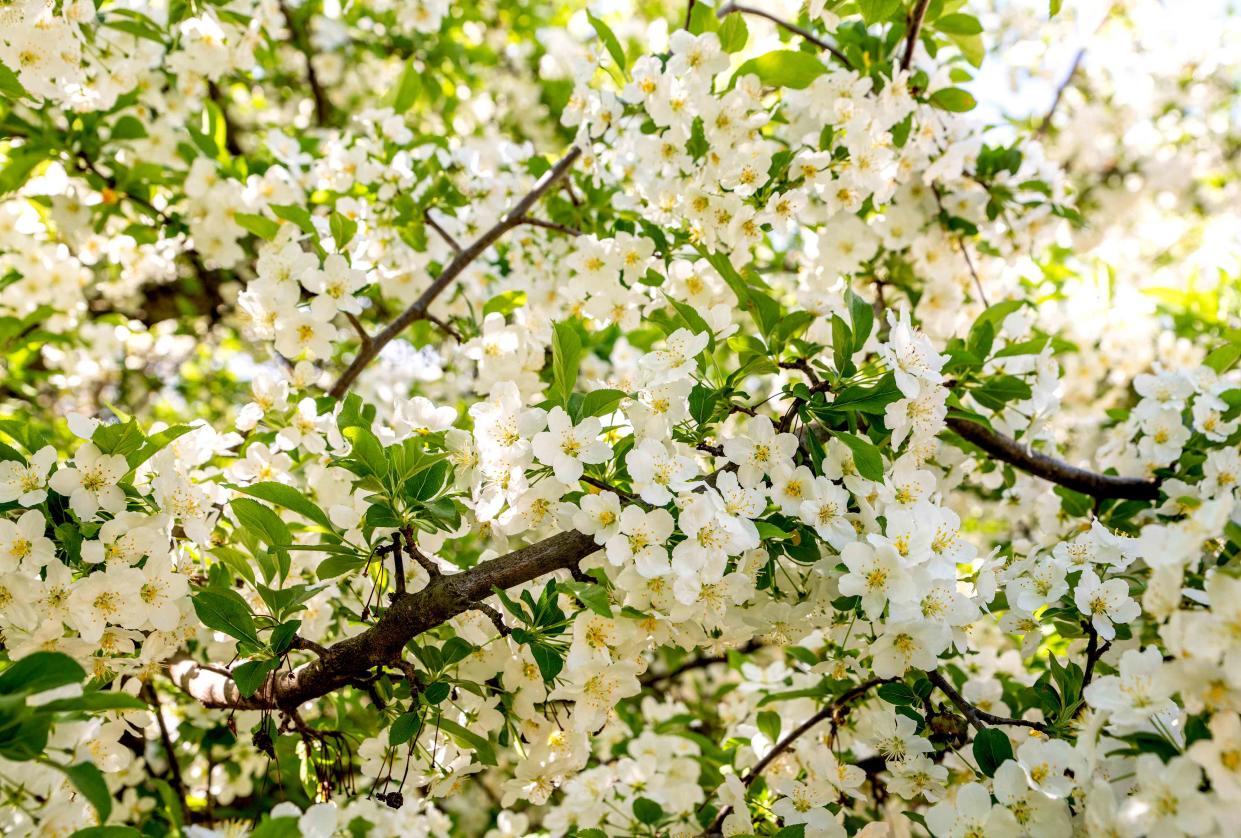
The Spruce / Adrienne Legault
Reviewed by Andrew Hughes
Sometimes adding variety to your landscape can be accomplished by selecting an interesting or uncommon plant for its design. One plant that might do the trick by giving your garden a certain wow factor is the Sargent crabapple (Malus sargentii). This medium-sized shrub packs a fragrant punch of spring and fall color that can last into the early days of winter while providing a tasty snack for your local wildlife. The Sargent crabapple is a leaderless shrub that spreads wider than tall, making an excellent screen or working well when grouped as a natural-looking hedgerow.
What draws most admirers to this lovely plant are its two shining features, the delicate white blooms, which start as light pink buds that welcome spring, and as summer turns to fall, these blossoms give way to produce brilliant red raisin-sized fruit. This fruit gives the shrub fall and early winter interest and makes this such an appealing selection. One drawback to the species that must be considered before choosing Sargent crabapple is its biannual bloom cycle. You will only get to delight in its aesthetic charms every other year.
Common Name | Sargent crabapple |
Botanical Name | Malus sargentii |
Family | Rosaceae |
Plant Type | Deciduous shrub |
Mature Size | 6 - 8 ft. tall, 9 - 15 ft. wide |
Sun Exposure | Full sun |
Bloom Time | April |
Bloom Color | White flowers, pink buds |
Soil Type | Acidic, well-drained, loamy |
Soil pH | 6.0 to 7.0 |
Hardiness Zones | 4-7 (USDA) |
Native Area | Japan |
Sargent Crabapple Care
The largest concern you will face when choosing to add Malus sargentii to your landscape is regular pruning, which due to its small stature, is predominantly for aesthetics and the plant's health. It is known to have excellent disease and pest resistance. Like many plants, properly locating it in the right conditions and providing for it as it matures will ensure its ongoing health and decrease any serious maintenance it requires.
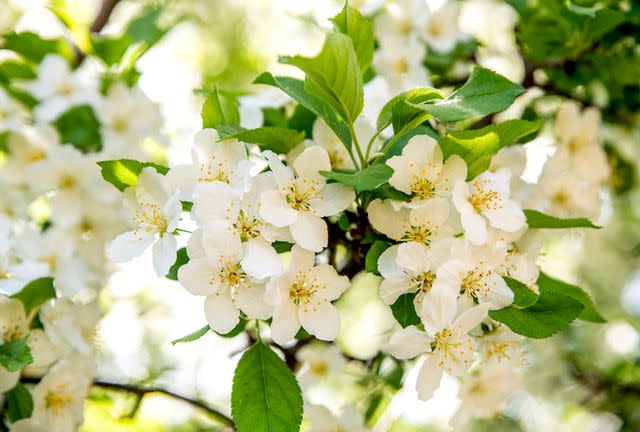
The Spruce / Adrienne Legault
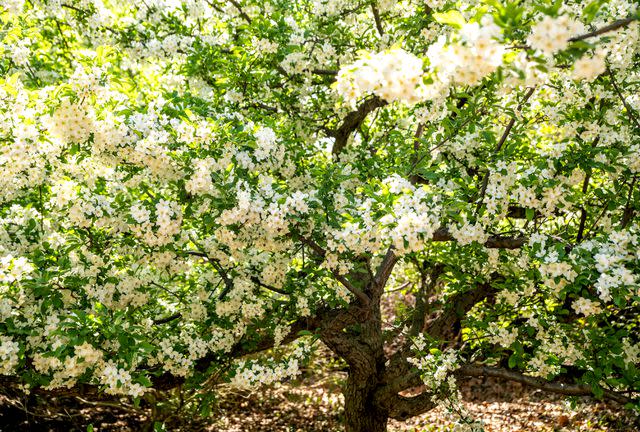
The Spruce / Adrienne Legault
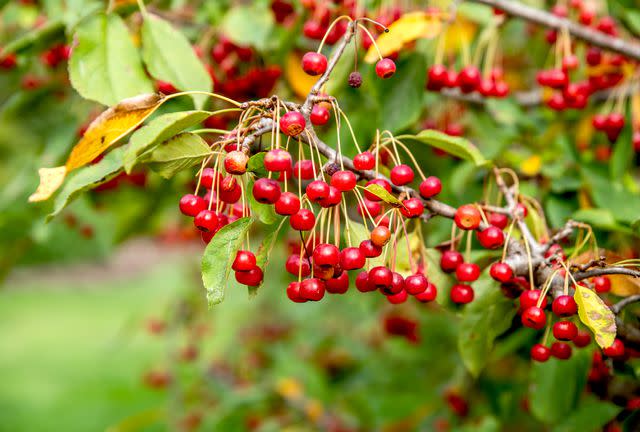
The Spruce / Adrienne Legault
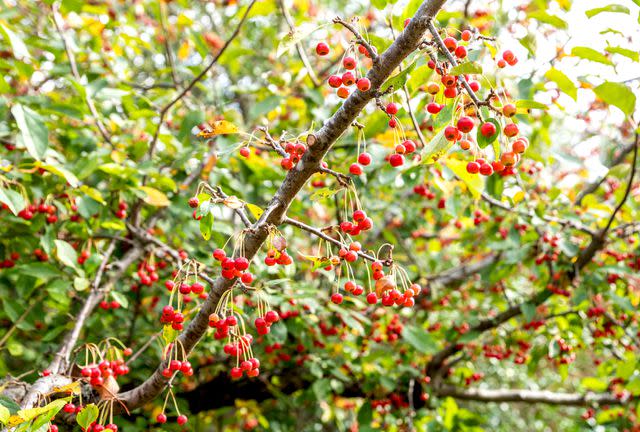
The Spruce / Adrienne Legault
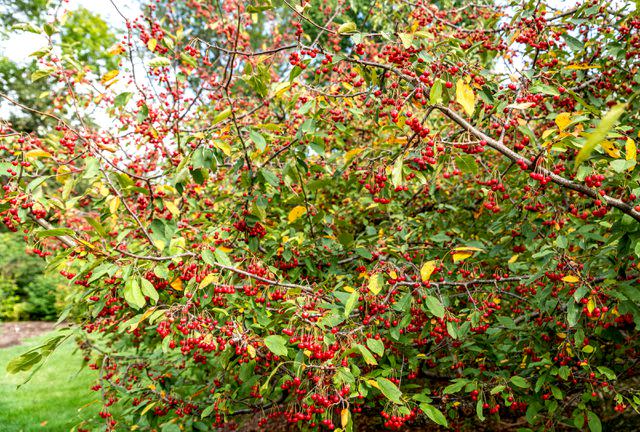
The Spruce / Adrienne Legault
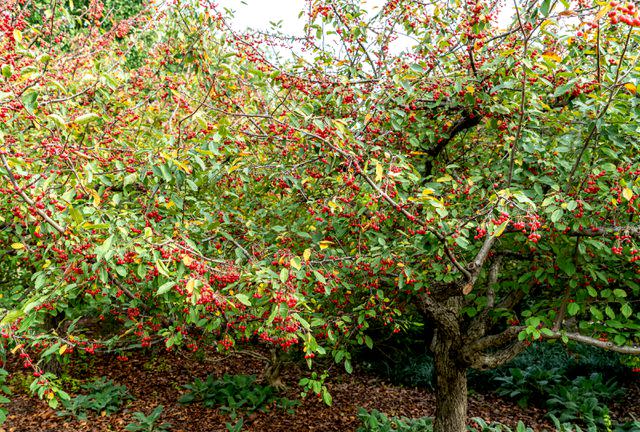
The Spruce / Adrienne Legault
Light
To take advantage of the fabulous color of the flowers and the blooms, the most important thing you can do for your shrub is provide it with plenty of sunlight. Place your crabapple in a setting that enjoys full sun, and you will benefit from more abundant fruit and blooms than if you were to place it in part shade. You will also notice more vigorous foliage, translating to a stunning autumn display when the shrub's leaves turn bright gold and act as a great backdrop for the bright red fruit. Little tricks like this are a great way to incorporate color design into a landscape.
Soil
Sargent crabapples adapt well to different soil conditions, making them a great choice for places where you know you might not have the best soil. Ideally, it favors a well-draining loam that leans towards acidic. If these soil conditions are not met, there will not be a huge falloff in health or fruit and bloom production. Hence, soil condition and type are not a huge concern and should not deter you from planting a Sargent crabapple or make you go to extraordinary lengths to fix any soil issues present.
Water
Keeping the Sargent crabapple well watered until it matures will be one of the most time-consuming tasks. It will require weekly watering to allow the shrub to establish a strong, healthy root system that will later become a hardy, somewhat drought-tolerant shrub. During the first two growing seasons, keeping the shrub's soil consistently moist is recommended. This can easily be checked by pressing your finger into the soil to a depth of about two-three inches and feeling if the soil is moist throughout. If it feels dry, water until it's drenched, but do not allow the water to sit.
Temperature and Humidity
When deciding if your climate is right for a Sargent crabapple, it is a good idea to consider moderation. The perfect temperature is neither too hot nor too cold and going too far, either way, will make the shrub's vigor suffer noticeably. It can suffer frost damage in colder weather, and the foliage can scorch in hot, dry weather. The USDA recommends zones 4-7, but in the extreme ranges of these zones, you may want to consider providing cover in the afternoon or blocking the shrub from high cold wind conditions.
Fertilizer
Without fertilizer a Sargent crabapple will do well on its own. Don't add fertilizer just because you think you should. You should always test your soil for deficiencies before adding fertilizer.
Types of Sargent Crabapple
Malus sargentii is now considered a species, but it was not always this way. Until recently, the species was considered a variety of Malus sieboldii. Because of this, many plants that people consider cultivars of Sargent crabapple are varieties of (or hybrids with) other malus species. There are a few notable cultivars of Malus sargentii, which are common and often available, but not many. Two of the most often seen are:
Malus sargentii ‘Tina’: a dwarf cultivar with a mature height and spread of only five feet.
Malus sargentii Firebird®: an upright cultivar that can be pruned to have a single leader.
Pruning
Pruning the Sargent crabapple is done mostly for aesthetic reasons and removing dead and damaged branches. The form of the shrub is somewhat naturally unkempt and nest, so this is the aesthetic that the shrub will eventually always revert to unless pruned constantly, which is not something you should consider. When the time comes and the shrub needs to be pruned, the task should be put off until winter to ensure that the plant is not infected with fire blight. Pruning the shrub while it has fresh green growth opens it up to the opportunity to allow in the blight-causing pathogen. Pruning in the winter will cause the loss of some blooms, but this is a much-preferred outcome compared with a sick shrub.
Propagating Sargent Crabapple
The easiest way to propagate Sargent crabapple is by simply taking a cutting from an existing plant. Finding a healthy, vigorous plant that gives off abundant blooms and fruit and using that as the parent plant will guarantee the next generation is just as successful as the two plants will be genetically identical. The steps to take a cutting are easy, do not require many tools, and will just demand some patience.
To take your cutting:
Find a branch about 1/8 of an inch in diameter with new growth and cut about 5 to 7 inches of new growth off of it.
Remove the leaves from the bottom two-thirds of the cutting and scrape away the bark exposing the fleshy part of the branch.
Cut the end of the cutting at a 45° angle.
Use your pencil, dibbler, or any pointy instrument to poke holes into your potting mix for your cuttings.
Dip your cuttings in your rooting hormone and let soak according to the product's instructions.
Keep the potting mix moist and in a cool, indirectly lit area. It will take a bit for roots to get established. Check the bottom of the pots around the three-month point to see if they have started.
When roots have been established, transplant the plants into larger individual pots and let roots establish in those pots for one to three months.
Common Pests & Plant Diseases
As a species, Sargent crabapple has excellent disease resistance to most pathogens. It is still only slightly susceptible to diseases that plague other species in the genus Malus such as fire blight, apple scab, and leaf rust. If you want the same overall appeal with even less risk of disease, then choosing the cultivar ‘Tina’ would be perfect. Malus sargentii’ Tina’ is extremely disease resistant, and the common malus diseases are barely a risk.
One of the great traits of Sargents crabapple, besides disease resistance, is also how little a threat pests present to the species. A plant may be occasionally attacked by aphids, tent caterpillars, spider mites, or borers. Still, none present a serious threat to the shrub and can usually be handled through off-the-shelf products if they cause you to worry.
Frequently Asked Questions
How long do Sargent crabapples live?
For a small shrub they have a pretty good lifespan. You can expect the average specimen to live 40-60 years.
Is Sargent crabapple edible?
The tiny fruit is edible, but there is very little to eat, and birds love them! The fruit, when eaten, is sweet and rose-like.
How long does it take for the Sargent crabapple to produce fruit?
While conditions and location will effect individual plants on average most shrubs will start producing fruit two to five years after it has been planted.

